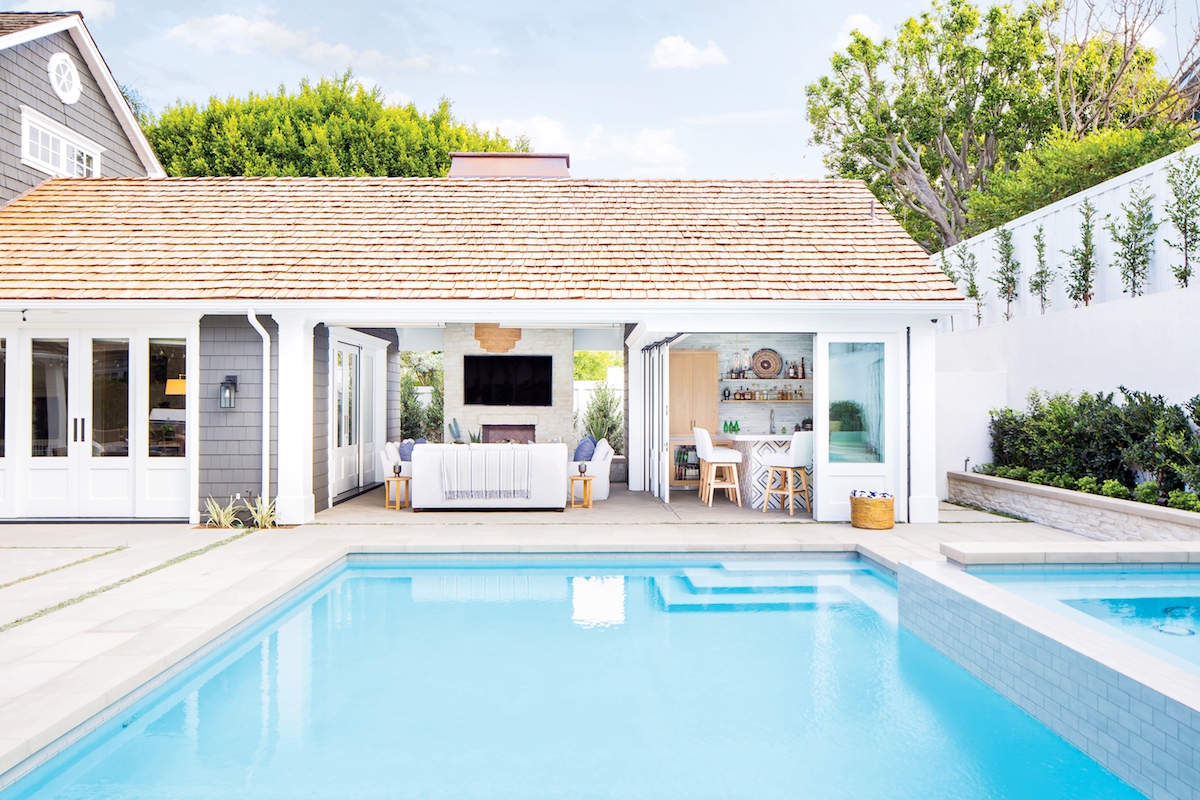
Local interior designers discuss the ins and outs of creating spaces that seamlessly bring together a home’s indoor and outdoor living areas.
By Ashley Probst and Newport Beach Magazine Staff
Homeowners looking to expand their space have likely heard of indoor-outdoor living. This trending design concept is an amalgamation of indoor comforts as well as natural beauty. Southern California residents are in the ideal locale for incorporating this type of layout, and local interior designers often receive requests for such projects.
“Newport Beach is a lifestyle,” says Susan Thiel, owner of her eponymous interior design firm, Susan Thiel Design. “We live in the U.S. Riviera, which offers beautiful ocean views, mountain views, harbor views, gorgeous sunsets—the outdoors are what really make Newport Beach special and it is important to clients to enjoy the outdoors as much as possible.”
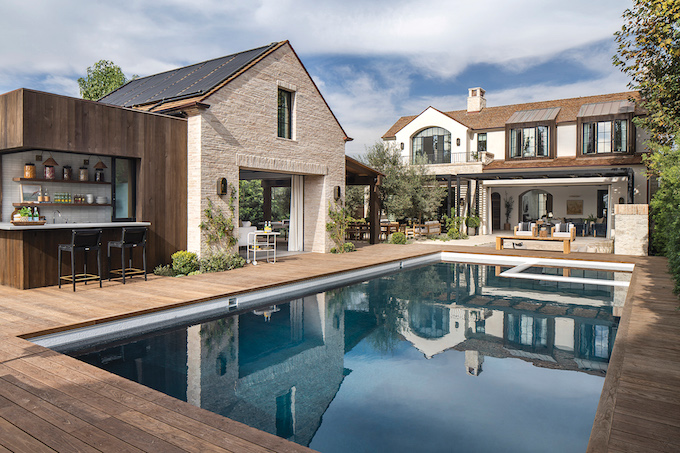
Thiel also notes that this type of design is great for entertaining, as it allows guests to easily move through the main house to any outdoor spaces. Raili Clasen, owner of Raili CA Design, echoes that idea.
“In California, the weather makes it very fun to be able to travel through all [of] your different spaces without opening doors [or] closing doors,” Clasen says. “… It’s very cool to walk into a home and feel like you’re outside, but you’re still protected.”
Spacial Awareness
The home itself plays a big role in deciding what is possible for these designs: Someone who is building a new house can get a bit more creative, whereas those who are renovating an existing structure have limitations on what’s possible.
In the latter scenario, when the home doesn’t have a natural flow, Clasen recommends adding a new outdoor space. “Create a pergola or an additional room that becomes your indoor-outdoor [area],” she explains. For both designers, some of the most common types of indoor-outdoor spaces are kitchens, bars, living rooms and dining areas.
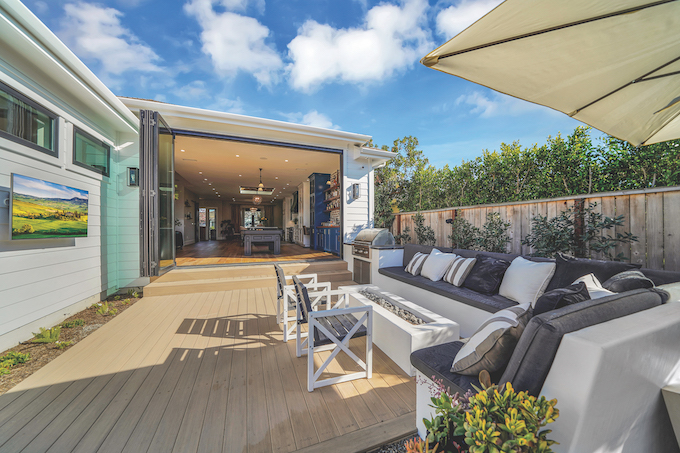
“Most clients request an outdoor living room, which is great for parties or conversation,” Thiel says, noting her team has even installed TVs in these spaces. Another popular build-out is a full kitchen, often complete with barbecues and pizza ovens.
Designer Brooke Wagner adds that clients have also been requesting fire pits surrounded by deep lounge seating and even indoor-outdoor game rooms for watching sports or playing foosball and ping-pong.
Opening Up
Thiel says that 90% of the homes she’s worked on have featured large sliding doors that open to an outdoor living area. “This creates an invitation for guests to enjoy the outdoor landscape design and the extra space,” Thiel says, noting her team often installs these to make for a seamless flow.
Her team also recently installed a sliding window that opens at the sink to create a buffet-style bar. “It makes it easy to prepare food and serve without having to go inside and outside to replenish and clean up,” Thiel says.
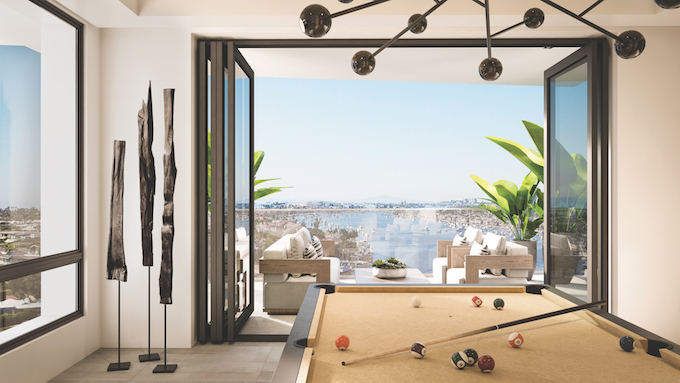
Clasen says a couple of her go-tos are pass-through windows and nano-doors, such as the bifold ones by LaCantina Doors. “You can just literally open them up and talk to your guests like they’re sitting at your kitchen island, but they’re outside,” Clasen says. “Those are a big ask these days when we’re doing new builds and big remodels.”
Clasen incorporated these windows in her own indoor-outdoor home bar, which she uses to serve guests refreshing cocktails such as tequila soda with muddled fruit.
“When we’re entertaining out on the deck, we just slide those open and, if I’m washing dishes or I want to bring the platters outside, the countertop goes straight from my kitchen all the way to the other side of the LaCantina windows,” she explains. “… It’s just awesome to be able to have those open and be part of the party outside while you’re inside.”
Outdoor-Friendly Features
Certain precautions must be taken when furnishing and decorating a space that is even slightly exposed to the elements.
“Outdoor furniture needs to be able to withstand temperature changes and clean easily,” Thiel says, noting that some common materials for durable furniture include iron, wicker, teak, rope, stone and aluminum.
Though Clasen loves teak, she isn’t a fan of metal furniture because it gives off too much of an outdoor vibe, which defeats the purpose of designing these spaces to feel like you’re indoors.
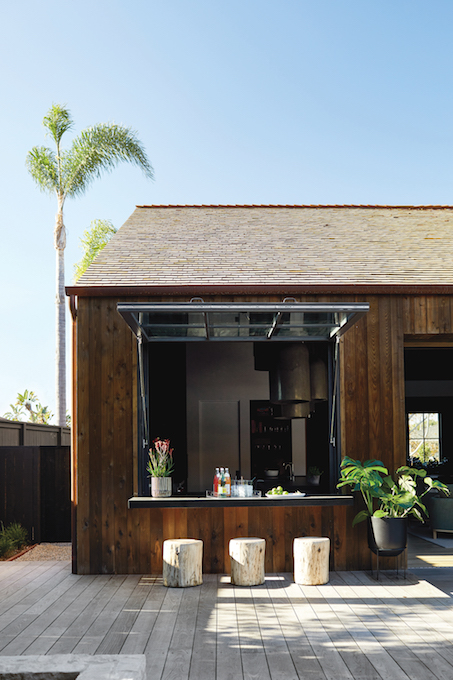
Advancements have also made it possible to manufacture washable outdoor fabrics that can withstand the elements—there’s no reason to sacrifice comfort.
“The fabrics are now very soft and thick, which can mimic regular indoor upholstery,” Thiel explains. She often uses outdoor fabrics on indoor sofas because of the easy maintenance, which makes them ideal for indoor-outdoor furniture.
Wagner adds that she often incorporates solution-dyed acrylic rugs and textiles by Perennials and the Great Plains collection by Holly Hunt. “There are amazing ones on the market now that look and feel like indoor … linens, but have the durability to withstand stains, weather, fading, etc.,” she says.
A few accessories and other decor that Thiel adds to these spaces are outdoor rugs, stone vases, faux succulents and flowers, glass jars and shells. TVs are also highly requested and she enjoys adding a fire or water feature to any home.
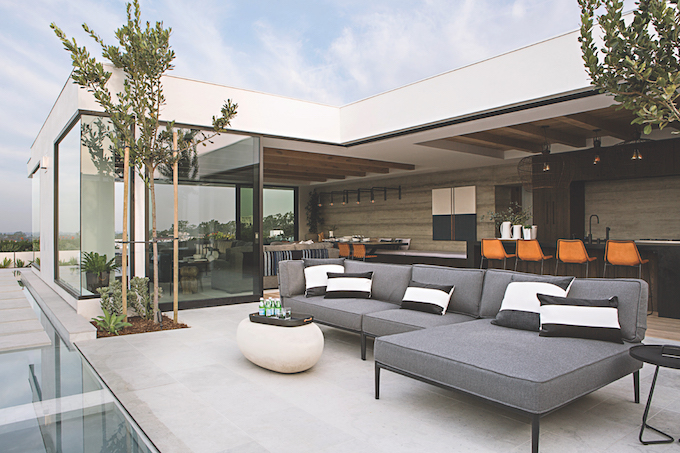
Wagner also suggests throw blankets, pillows, coffee tables and plants. “Add touches to warm up outdoor spaces like you would for interiors,” she says.
One thing Clasen believes these spaces lack is artwork. “No one ever puts art outside and, these days, you can print photography and art on aluminum and it looks like it’s painted on canvas,” Clasen says.
Additional elements that are imperative for a successful indoor-outdoor space are good lighting, music and shade. “There are a variety of options to create shade: wood structures, roof structures, trees and umbrellas can shield guests from the sun and glare,” Thiel says.
Thankfully, technology has made this type of design concept easy to create and maintain. “Outdoor music and lighting can withstand the elements along with fabrics and fixtures,” Thiel says. “… Today, there are so many different styles of outdoor furnishings and fabrics that can create a really unique and welcoming space for you and your guests. We can create beautiful outdoor living spaces that will withstand the test of time.”




